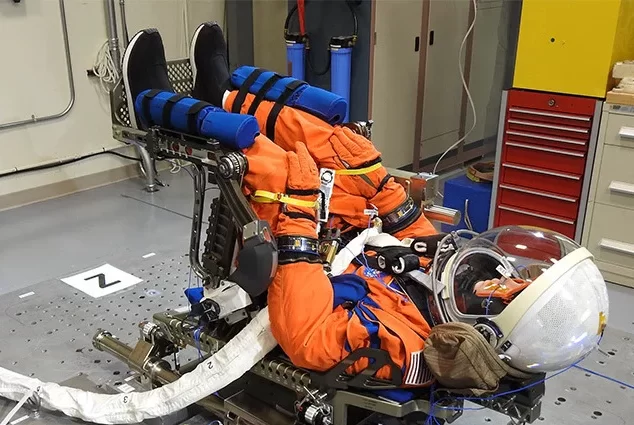UPDATE: Monday’s scheduled launch of the Artemis 1 test flight to the moon was scrubbed, after engineers were unable to resolve an engine problem.
One of the four Space Launch System (SLS) core-stage engines failed to reach the proper temperature for launch, prompting the Artemis I mission’s launch director to scrub the planned Monday morning liftoff.
With just 40 minutes left on the countdown, scheduled as early as 8:33 a.m. ET, flight controllers had called a hold while engineers evaluated the problem.
Engineers were dealing with a series of issues in the runup to the planned launch. First, lightning strikes at the pad on Saturday initially caused some concern, but officials later said there was no damage to the vehicle, the capsule or ground equipment. Then came a 45-minutes weather delay early Monday morning that slowed the procedure for filling the core stage with its hydrogen fuel. A leak was also discovered, but resolved.
The next launch opportunity for the uncrewed Artemis I launch is Friday. The flight is meant as an initial step in eventually returning humans to the surface of the moon — a flight that could take place as early as 2025.
ORIGINAL ARTICLE:
While no humans will be aboard NASA’s Artemis I mission, the Orion spacecraft won’t be empty. Snoopy, Girl Scout badges, LEGO minifigures and tree seeds are just some of the thousands of mementos that will be aboard when the mission launches from Kennedy Space Center in Florida, on Monday morning, at a scheduled time of 7:33 A.M. Central Time, according to space.com.
There will also be a lot of technology that will gather data during the 42-day, 1.3 million-mile mission that will take the uncrewed spacecraft as far as 280,000 miles away from Earth, circling the moon before heading home.
It’s been nearly 50 years since people have set foot on the moon, so the test flight will also be a trial of the new rocket and spacecraft before a crewed flight.
“We’re mindful that this is a purposeful stress test of the Orion spacecraft and the Space Launch System Rocket,” Mike Sarafin, the mission manager for Artemis I, said at a press conference Saturday.
“We will learn a great deal from the Artemis I test flight. And through this experience, we will change and modify anything necessary to prepare ourselves for a crewed flight on the very next mission.”
NASA is planning to send humans to the moon in 2025. As part of the preparation, the passengers aboard this mission will be manikins.
Meet Commander Moonikin Campos
This manikin got its name from a public contest and was ultimately named after Arturo Campos, the NASA engineer who was instrumental in getting the Apollo 13 crew back to Earth safely.
Moonikin Campos will sit in the commander’s seat. Under the seat are sensors to measure acceleration and vibration to help assess what human crew members might experience during a flight. Campos will be all decked out in the official Orion Crew Survival System spacesuit that will include two radiation sensors.
And while Moonikin Campos could certainly have all the fun, it won’t be alone. Two other manikins will be seated with it.
Helga and Zohar are what NASA calls phantoms — or manikin torsos made up of materials that mimic human bones, soft tissues and adult female organs. A big part of their mission involves radiation detection and measurement.
“Zohar will wear a radiation protection vest, called AstroRad, while Helga will not,” NASA said in a description of the manikins’ duties. “The study will provide valuable data on radiation levels astronauts may encounter on lunar missions and evaluate the effectiveness of the protective vest that could allow crew to exit the storm shelter and continue working on critical mission activities in spite of a solar storm.”
Don’t forget about Snoopy
While there are many miscellaneous items joining the exciting Artemis I mission, none might be as recognizable as Snoopy the black and white dog created by American cartoonist Charles M. Schulz.
Snoopy is not new to NASA and has been tied to moon missions since 1969 when the lunar module of the Apollo 10 mission was nicknamed Snoopy because of its role in scouting out or “snooping around” a landing site for the Apollo 11 mission.
Schulz also created cartoons of Snoopy on the moon that captured “public excitement about America’s achievements in space” during the Apollo years, according to NASA.
This time though, Snoopy has a mission of his own. Because the Artemis I mission is uncrewed, a plush Snoopy will serve as a zero gravity indicator to show the team on the ground when the spacecraft reaches weightlessness.

